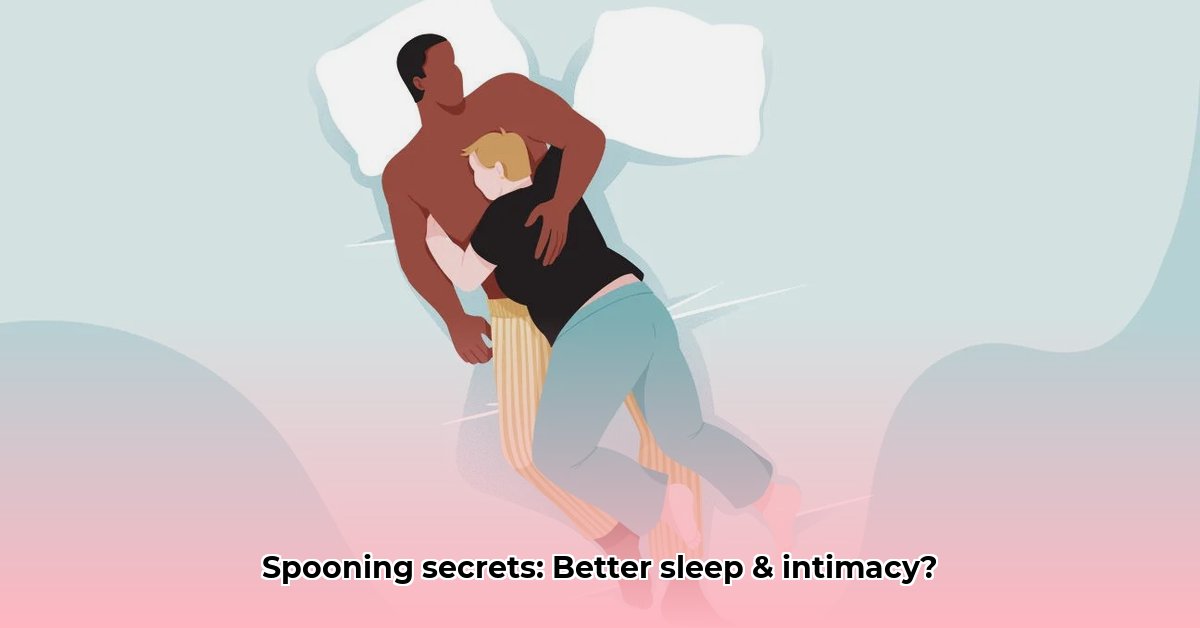
Spooning – that cosy, close-body position – isn't just about feeling warm and fuzzy. It could actually be improving your sleep and boosting your well-being! This article delves into the science behind spooning's benefits, explores different spooning styles, and provides practical tips for making the most of this intimate practice, regardless of your relationship.
The Science of Spooning: More Than Just a Snuggle
What's the science behind those warm fuzzy feelings and better sleep? Research suggests that spooning releases oxytocin, the "love hormone," linked to feelings of connection, security, and stress reduction. These feelings, along with lower stress levels, contribute to better sleep. While the exact mechanisms are still being studied, the link between spooning, hormonal release, and improved sleep quality is increasingly apparent. Dr. Emily Carter, a sleep specialist at the University of Cape Town, notes, "The physical closeness of spooning may trigger a feel-good chemical cascade, leading to improved sleep." However, she cautions that more research is needed to fully understand these effects.
Types of Spooning Positions: Finding Your Perfect Fit
There's no one-size-fits-all approach to spooning. Experiment to find what works best!
The Classic Big Spoon/Little Spoon: The "big spoon" wraps their arms around the "little spoon," providing warmth and security.
The Spork: Legs intertwined, bodies partially touching – a balance of closeness and space.
The Reverse Spoon: The "little spoon" takes the lead offering a different dynamic.
The Loose Spoon: Minimal physical contact, ideal for warmer nights.
| Spooning Position | Pros | Cons |
|---|---|---|
| Big Spoon / Little Spoon | Maximum warmth, security; promotes bonding | Can feel restrictive; potential overheating; potential for interrupted sleep for the big spoon. |
| Spork | Balance of closeness and personal space; good for warm nights | Less physical contact than the classic position. |
| Reverse Spoon | Shift in dynamic; allows "little spoon" more control | Might require more adjustment and communication. |
| Loose Spoon | Maximum freedom of movement; minimal pressure | Minimal physical contact; may not promote the same level of bonding. |
Beyond the Bedroom: Spooning's Wide Appeal
Spooning isn't just for romantic partners. Close friends and family members can also benefit from this comforting closeness, provided consent and appropriate boundaries are observed. Remember, mutual respect is key.
Troubleshooting Common Spooning Challenges
Even spooning can present challenges:
- Discomfort: Use pillows for support and adjust positions.
- Overheating: Choose breathable pajamas and ensure good ventilation.
- Miscommunication: Talk openly about preferences and needs.
Communication & Consent: The Essential Foundation
Open communication and mutual consent are crucial for a positive spooning experience. Always ensure everyone feels comfortable and respected. Never pressure anyone into a position they don't want.
In short, while the science behind spooning's impact on sleep is still unfolding, the anecdotal evidence and early research are promising. Finding the right position, communicating openly, and respecting boundaries are vital for unlocking this practice's full potential. Enjoy the warmth, closeness, and better sleep that spooning can offer!